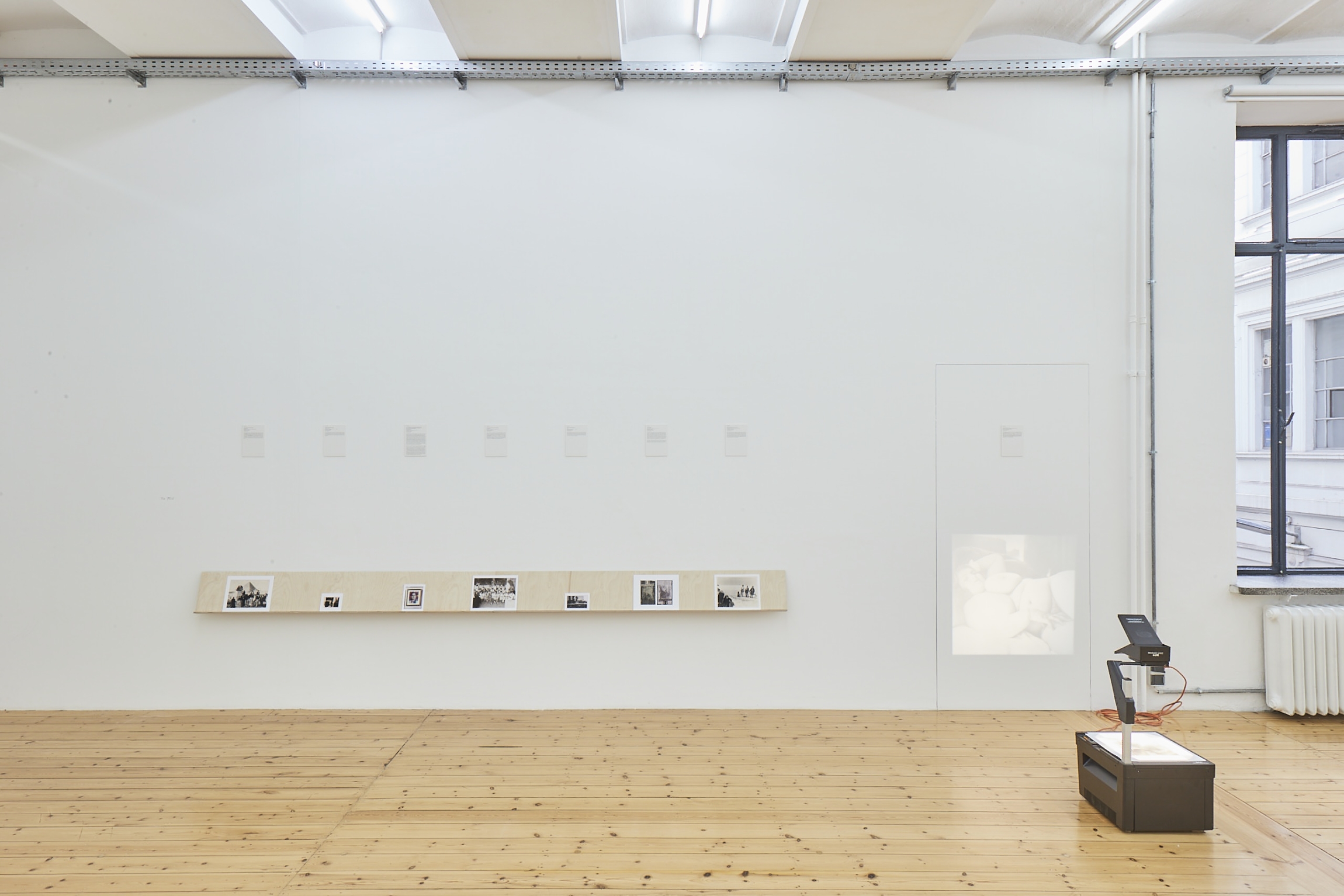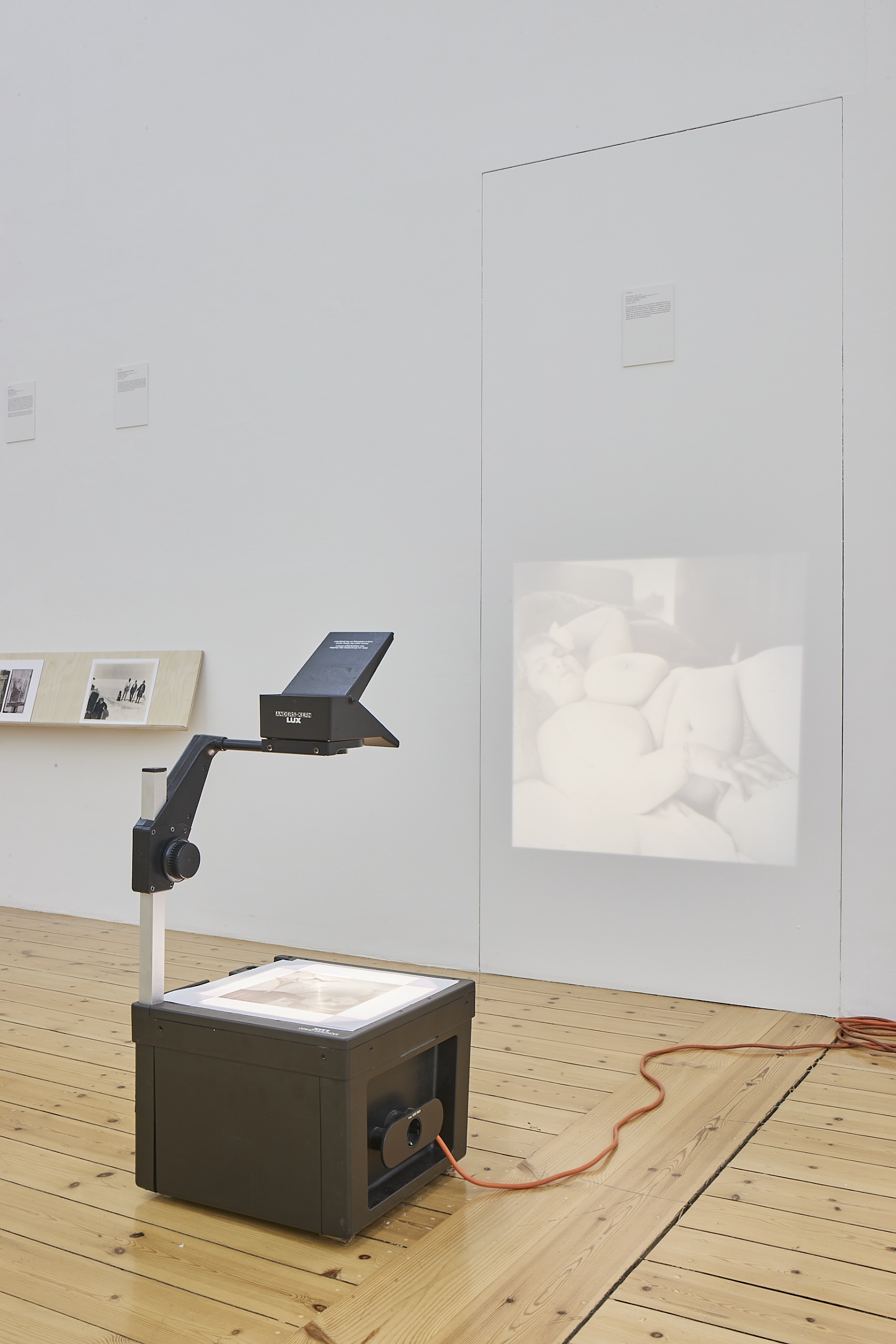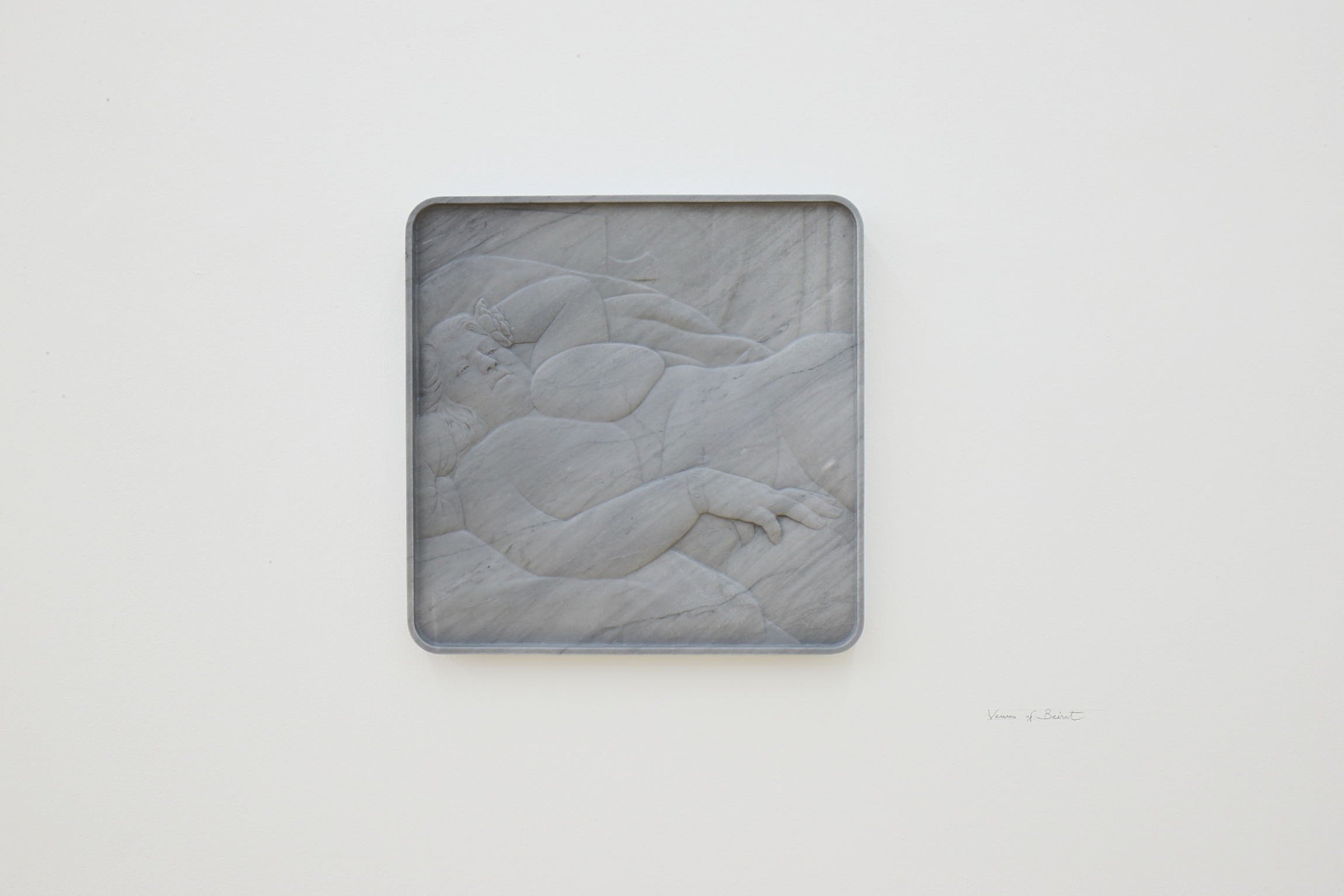The Fold, 2018
Within the same space, The Fold, 2018, explores specific phenomena that captured Zaatari’s interest in photographs from the collection of the Arab Image Foundation (AIF). The Fold presents a model for interpreting photographs, thus providing keys to their reconfiguration. Most surprising is the photograph form Beirut in the 1920s - 1930s showing a reclining nude woman, originally attributed to the late Kamal Haddad, and taken to be turned into a painting. It’s transformed by Zaatari into a bas-relief in marble. Probably never meant to be displayed as a photograph, given social constraints in Lebanon at that time, the fact that it was printed as a transparency makes it, for the artist, a middle step in an artistic practice and not an end itself.
0136ha00010
Beirut, Lebanon, 1920s - 1930s
Laser print of monochrome transparency on film, 29.6 x 23.7 cm Photographer: Farid Haddad
Collection: George Haddad
Courtesy of the AIF
This transparency came as a set with other transparencies that re- present nude women posing on a bed and are attributed to Dr. Farid Haddad from the 1920s or 1930s. Haddad was a Lebanese medical doctor who practiced painting in addition to medicine, and who might have produced some paintings based on these photographs, which explains why they were printed on transparencies, thus anticipating their use on overhead projector.


